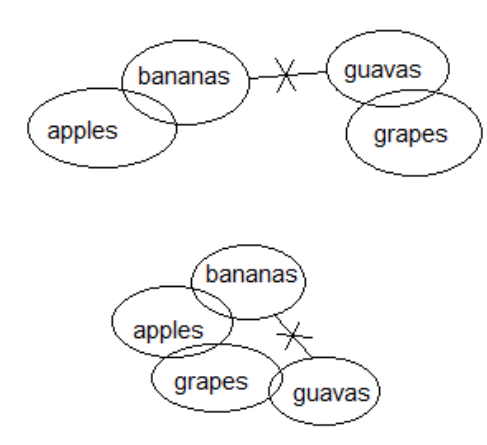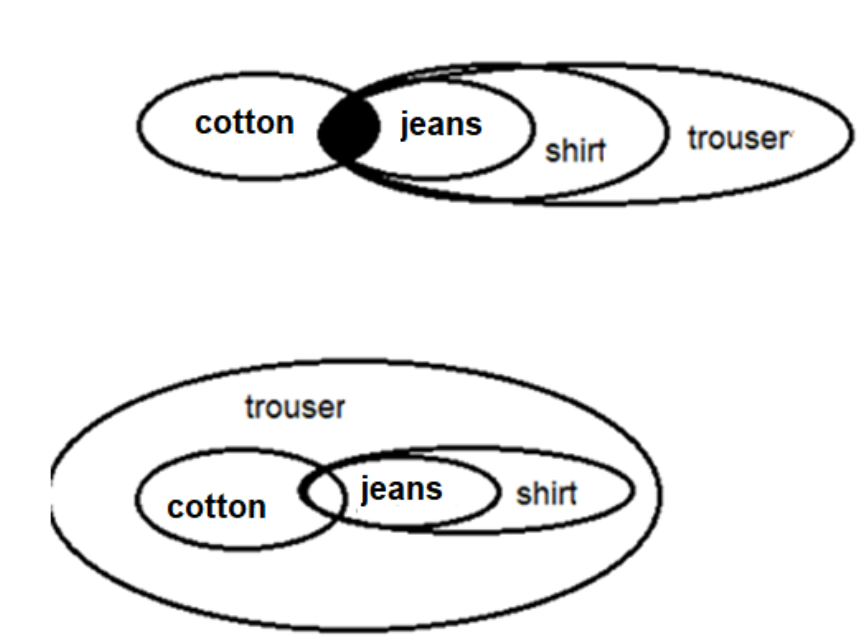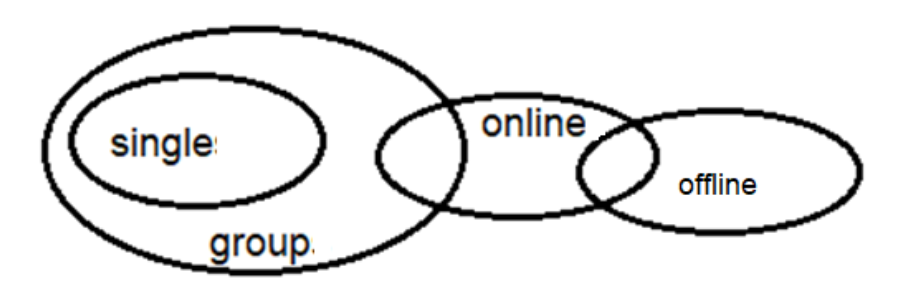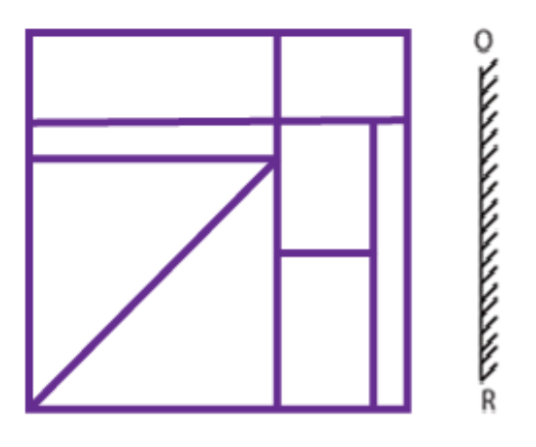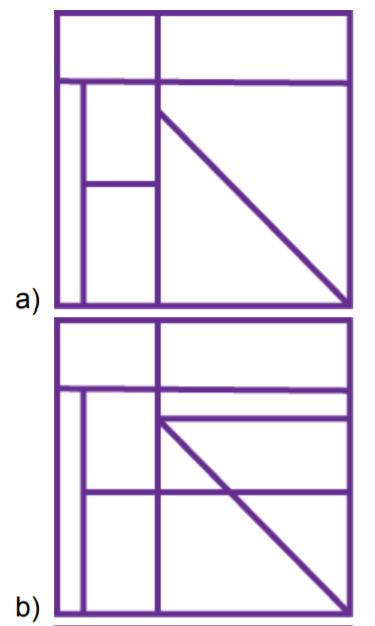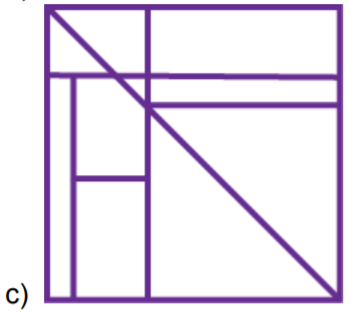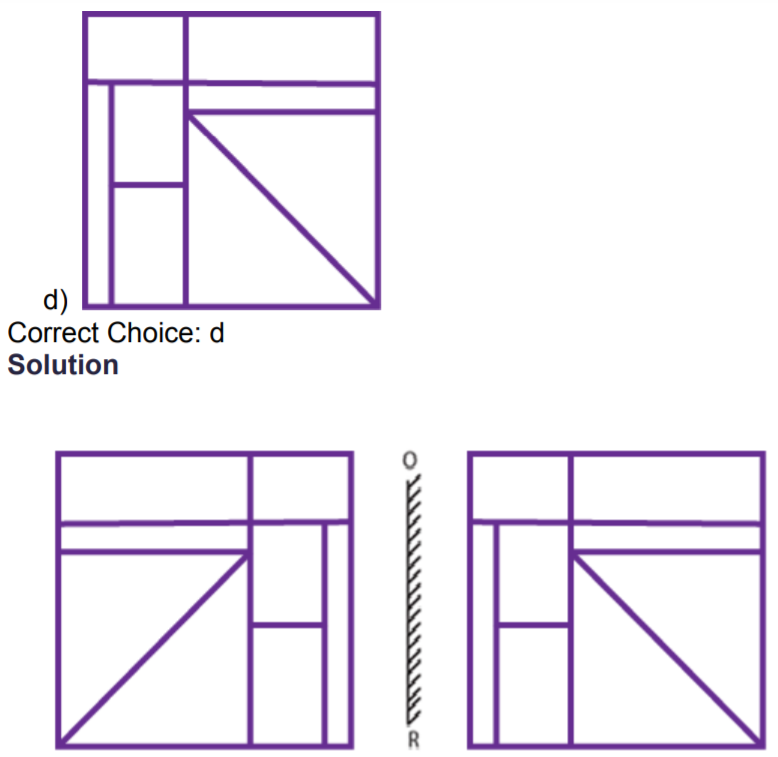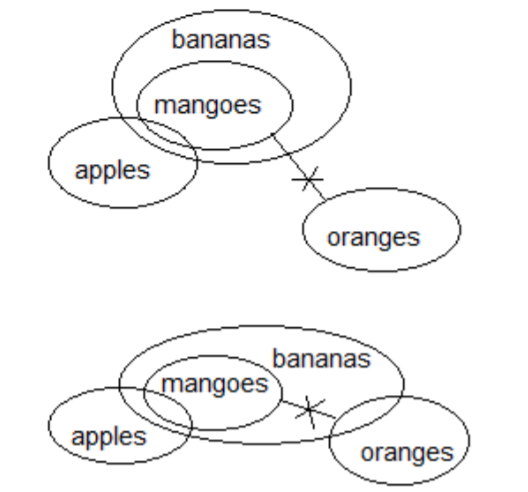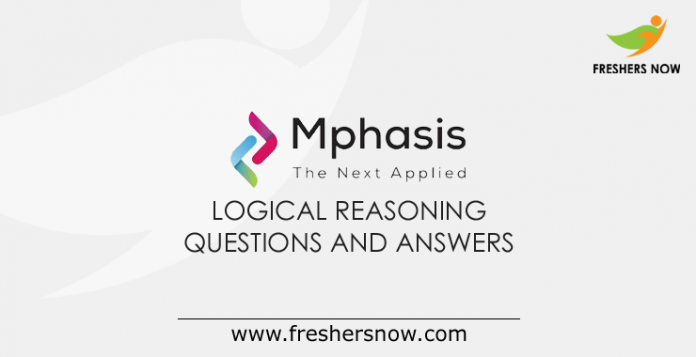
Mphasis Logical Reasoning Questions and Answers PDF Download: Job aspirants who are looking for the Mphasis Logical Reasoning Questions and Answers For Freshers, they can gather them from this article. Well, the Reasoning section is very important for any placement exam. This is the right platform to learn Mphasis Logical Reasoning Questions and Answers with Solutions.
Mphasis Logical Reasoning Questions and Answers with Explanation
By solving Mphasis Logical Reasoning Questions and Answers, you can clearly understand the exam pattern as well as the difficulty of the questions that appear in the test. As we have provided the sample Mphasis Logical Reasoning Questions and Answers, it will be very easy to solve. Therefore, students should practice each and every question in the Logical Reasoning section.
Mphasis Logical Reasoning Questions and Answers with Solutions
1. In the question, a word is represented by only one set of number as given in any one of the alternatives. The sets of numbers given in the alternatives are represented by 2 classes of alphabets as in two matrices given below. The columns and rows of matrix I are numbers from 0-4 and that of matrix II are numbers from 5-9. A letter from this matrix can be represented 1st by its row and next by its column. Ex- ‘A’ can be represented by 20, 79 etc. and ‘B’ can be represented by 11, 67, 96 etc. Similarly, you have to identify the set of word ‘PREVENT’.
Matrix – I
| 0 | 1 | 2 | 3 | 4 | |
| 0 | K | H | T | R | E |
| 1 | P | B | C | S | T |
| 2 | A | L | N | G | D |
| 3 | H | K | R | B | M |
| 4 | P | N | F | E | S |
Matrix – II
| 5 | 6 | 7 | 8 | 9 | |
| 5 | J | R | G | D | W |
| 6 | K | N | B | G | Y |
| 7 | C | S | W | R | A |
| 8 | N | U | V | P | T |
| 9 | K | B | C | X | D |
- 10, 32, 34, 78, 22, 66, 14
- 40, 56, 43, 87, 04, 85, 14
- 40, 56, 43, 87, 04, 58, 14
- 40, 65, 43, 87, 04, 85, 14
Correct Choice: 2
Solution
As the digits of the numbers represented by rows and columns respectively,
| P | R | E | V | E | N | T |
| 10, 40, 88 | 03, 32, 56, 78 | 04, 43 | 87 | 04, 43 | 22, 66, 85, 41 | 02,14, 89 |
Hence, option b.
2. Three statements are given followed by three conclusions numbered I, II, and III assuming the statements to be true, even if they seem to be at variance with commonly known facts. Decide which of conclusions logically follow(s) from the statement.
Statements:
Some apples are bananas.
No bananas are guavas.
Mostly guavas are grapes.
Conclusions:
I. Some grapes are bananas.
II. Mostly guavas are apples.
III. Some grapes are apples.
- None follows
- Only conclusion II follows
- Conclusion II and conclusion III follow
- Conclusion I and conclusion III
Correct Choice: None follows
Solution
Following figure can be formed from the statements.
None follows.
Hence, option a.
3. A letter series is given below in which some letters are missing. Select the option that gives the letters that can fill these blanks in that order.
q_rs_uu_rrst_uq_rstuu
- Rtqur
- Qturq
- Rsqur
- Rtqru
Correct Choice: Rtqur
Solution
From option (a), q r r s t u u / q r r s t u u / q r r s t u u
Hence, option a.
4. In the question, relationship between some elements is shown in the statements (s). These statements are followed by two conclusions. Read the statements and give answer.
Statements: Q ≤ D ≥ E > F; H = F > X ≥ Y
Conclusions:
I. D > Y
II. E> H
- Only conclusion I is true
- Only conclusion II is true
- Either conclusion I or II is true
- Both conclusions I and II are true
Correct Choice: Both conclusions I and II are true
Solution
Given statement: Q ≤ D ≥ E > F; H = F > X ≥ Y
On combining statements, we get,
D ≥ E > F > X ≥ Y and D ≥ E > F = H
Conclusions:
I. D > Y: True (As, D ≥ E > F > X ≥ Y, so, D > Y)
II. E > H: True (As, E > F = H, so, E >H)
Hence, option d.
5. In the question below there are three statements followed by two conclusions I and II. You have to take the three given statements to be true even if they seem to be at variance from commonly known facts and then decide which of the given conclusions logically follows from the three statements disregarding commonly known facts.
Statements:
Only a few cotton is jean
All jean is shirt
All shirt is trouser
Conclusions
I. Some shirt is not cotton
II. Some cotton is not trouser
- Only conclusion I follows
- Both the conclusions I and II follow
- Neither conclusion I nor II follows
- Only conclusion II follows
Correct Choice: Neither conclusion I nor II follows
Solution
Following figures can be formed from the statements.
So, neither conclusion I nor II follows.
Hence, option c.
6. In the question below there are three statements followed by two conclusions I and II. You have to take the three given statements to be true even if they seem to be at variance from commonly known facts and then decide which of the given conclusions logically follows from the three statements disregarding commonly known facts.
Statements:
Only group is single
Some group is online
Some online is offline
Conclusions:
I. No single is online
II. All single being offline is a possibility
a) Only conclusion I follows
b) Both the conclusions I and II follow
c) Neither conclusion I nor II follow
d) Only conclusion II follows
Correct Choice: a
Solution
Following figure can be formed from the statements.
Since, only group is single is given which means all single is only part of group so, conclusion I follows.
Hence, option a.
7. In the question, relationship between some elements is shown in the statements (s). These statements are followed by two conclusions. Read the statements and give answer.
Statements: P ≥ Q ≤ R < S; T ≥ U < S ≤ V
Conclusions:
I. U < R
II. P ≥ S
- Only conclusion I is true
- Only conclusion II is true
- Either conclusion I or II is true
- Neither conclusion I nor II is true
Correct Choice: d
Solution
Given statement: P ≥ Q ≤ R < S; T ≥ U < S ≤ V
On combining statements, we get, Q ≤ R < S ≤ V; P ≥ Q ≤ R < S ≤ V
Conclusions:
I. U < R: False (As, U < S > R, we cannot establish the exact relation between U and R)
II. P ≥ S: False (As, P ≥ Q ≤ R < S, we cannot establish the exact relation between P and S) Hence, option d.
8. How many pairs of alphabets are there in the word ‘EXPLANATION’ which has as many letters between them in the word as in the alphabetical series?
- Three
- Four
- One
- Two
Correct Choice: Three
Solution Given word ‘EXPLANATION’ so, there are four such pairs i.e. AE, NL and NO Hence, option a.
9. Which of the following pair replaces ? in series given.
?, JM12, ?, BW22
- NH6, FQ17
- NH7, FR17
- OH7, EQ16
- NG7, FR18
Correct Choice: d
Solution
Given series ?, JM12, ?, BW22 N – 4 = J, J – 4 = F, F – 4 = B H + 5 = M, M + 5 = R, R + 5 = W 7 + 5 = 12, 12 + 5 = 17, 17 + 5 = 22
Hence, option b.
10. Which of the following letter will be 10th letter from the left end if the letters at even positions are replaced by succeeding letter in the word “LIMITEDEDITION” such that from left end “L” is at odd position and “I” is at even position and so on?
- F
- T
- O
- J
Correct Choice: J
Solution: If we replace the even positioned letters with their respective succeeding letter then we would get the following word “LJMJTFDFDJTJOO”. So, the letter, which is 10th from the left end is ‘J’. Hence, option d.
11. Statements: O > W ≤ K; W > S ≥ R; F ≤ E ≤ R
Conclusions:
I. O > F
II. E < K III. F ≤ W Only conclusion II is true. Both conclusions I and II are true. Only conclusion I is true. Both conclusions I and III are true.
Correct Choice: b
Solution
Given statements: O>W≤K; W>S≥R; F≤E ≤ R
On combining, we get
O>W>S≥R ≥ E ≥ F; K ≥ W >S≥R ≥ E ≥ F
Conclusions:
I. O>F: True (As O>W>S≥R ≥ E ≥ F, so, O > F)
II. E S≥R ≥ E, so K > E)
III. F≤W: False (As W>S≥R ≥ E ≥ F, so, W > F)
Hence, option b.
12. How many triangles are there in the following figure?
a) 2
b) 3
c) 4
d) More than 4
Correct Choice: c
Solution
There are 4 triangles present in the figure.
Hence, option c.
13. In a code language, PRIVACY is written as IRPCAYV. How would FOUNDER be written in the same code?
a) UOFEDRN
b) UOFERDN
c) UOEFDRN
d) UOFEDNR
Correct Choice : a
Solution
First three letters of the word are written in reverse order followed by the second last letter of the word. Fifth letter (from the left end) is not unchanged. Last letter becomes the second last letter and fourth letter becomes the last letter, so FOUNDER is written as UOFEDRN.
Hence, option a.
14. If a mirror is placed on the line OR, then which of the answer figures is the right image of the given figure?
Hence, option d.
15. Select the option that is related fifth term in the same way as the second term is related to the first term and the fourth term is related to the third term:
9643 : 11 :: 3278 : 10 :: 8976 : ?
17
14
15
13
Correct Choice: c
Solution
Second term is half the sum of all the digits of first term. i.e. Second term = ½ × (9 + 6 + 4 + 3) = 1/2 × 22 = 11. Fourth term is twice the sum of all the digits of third term.
i.e. Fourth term = 1/2 × (3 + 2 + 7 + 8) = ½ × 20 = 10. Sixth term is twice the sum of all the digits of fifth term, so Sixth term = ½ × (8 + 9 + 7 + 6) = ½ × 30 = 15. Hence, option c.
16. In the question, assuming the given statements to be true, find which of the conclusion (s) among given three conclusions is /are definitely true and then give your answer accordingly.
Statements: V < Q ≤ D; A < V; R < D ≥ S
Conclusions:
I. S < V
II. A < D
III. R < Q
A – Only conclusion II is true.
B – Only conclusions I and II are true.
C – Only conclusions II and III are true.
D – Only conclusion I is true.
Solution
Given statements: V < Q ≤ D; A < V; R < D ≥ S
On combining, we get
A < V < Q ≤ D > R; S ≤ D ≥ Q > V
Conclusions:
I. S < V: False (AsS ≤ D ≥ Q > V, relation between S and V can’t be determined)
II. A < D: True (As A < V < Q ≤ D, so A < D)
III. R < Q: False (As Q ≤ D > R, relation between R and Q can’t be determined)
Hence, option a.
17. In the question, assuming the given statements to be true, find which of the conclusion (s) among given three conclusions is /are definitely true and then give your answer accordingly.
Statements: T < M ≤ Q; D < R; S ≥ M; T < A < D
Conclusions:
I. R > T
II. S > A
III. D > M
A – Only conclusion II is true.
B – Only conclusions I and II are true.
C – Only conclusions II and III are true.
D – Only conclusion I is true.
Solution
Given statements: T < M ≤ Q; D < R; S ≥ M; T < A < D On combining, we get S ≥ M > T < A < D < R; Q ≥ M > T < A < D Conclusions: I. R > T: True (AsT < A < D < R, so R > T)
II. S > A: False (As S ≥ M > T < A, relation between S and A can’t be determined) III. D > M: False (AsM > T < A < D, relation between D and M can’t be determined). Hence, option d.
18. How many pairs of letters are there in the word “LANGUETS” which has as many letters between them in the word as in the alphabet?
A – Four
B – Three
C – Five
D – More than Five
Solution
Given: LANGUETS
LN, LS, AE, NS, EG and ST are the six pairs which have as many letters between them in the word as in the alphabet. Hence, option d.
19. In the question, assuming the given statements to be true, find which of the conclusion (s) among given three conclusions is /are definitely true and then give your answer accordingly.
Statements: B < L ≥ A; N < C ≤ A; T ≥ B < V Conclusions:
I. V > A
II. L ≥ C
III. N < B
A – Only conclusion II is true.
B – Only conclusion I is true.
C – Only conclusions I and II are true.
D – Only conclusions II and III are true.
Solution
Given statements: B < L ≥ A; N < C ≤ A; T ≥ B < V
On combining, we get
T ≥ B < L ≥ A ≥ C > N; V > B < L ≥ A Conclusions: I. V > A: False (As V > B < L ≥ A, relation between V and A can’t be determined)
II. L ≥ C: True (As L ≥ A ≥ C, so L ≥ C)
III. N < B: False (As B < L ≥ A ≥ C > N, relation between N and B can’t be determined)
Hence, option a.
20. Which of the following pair replaces ? in series given.
C19D, ? , M13H, R10J, W7L
A – J15F
B – H16F
C – H17G
D – H16E
Solution
Given series
C19D, ? , M13H, R10J, W7L
C + 5 = H, H + 5 = M, M + 5 = R, R + 5 = W
19 – 3 =16, 16 – 3 = 13, 13 – 3 = 10, 10 – 3 = 7
D + 2 = F, F + 2 = H, H + 2 = J, J + 2 = L
Hence, option b.
21. In the question, a word is represented by only one set of number as given in any one of the alternatives. The sets of numbers given in the alternatives are represented by 2 classes of alphabets as in two matrices given below. The columns and rows of matrix I are numbers from 0-4 and that of matrix II are numbers from 5-9. A letter from this matrix can be represented 1st by its row and next by its column. Ex- ‘A’ can be represented by 20, 66 etc. and ‘B’ can be represented by 10, 79, 97 etc. Similarly, you have to identify the set of word ‘ASSEMBLY’.
Matrix I
| 0 | 1 | 2 | 3 | 4 | |
| 0 | J | F | E | R | l |
| 1 | B | M | V | X | E |
| 2 | A | C | S | Z | Q |
| 3 | P | U | J | N | F |
| 4 | E | H | V | F | Y |
Matrix II
| 5 | 6 | 7 | 8 | 9 | |
| 5 | K | H | D | C | J |
| 6 | M | A | L | G | T |
| 7 | H | R | S | P | B |
| 8 | W | P | K | G | D |
| 9 | V | N | B | X | C |
A – 20, 22, 77, 02, 65, 78, 67, 44
B – 20, 22, 77, 68, 65, 97, 67, 44
C – 20, 22, 77, 02, 65, 97, 67, 44
D – 20, 22, 77, 02, 65, 97, 58, 44
Solution
As the digits of the numbers represented by columns and rows respectively,
| A | S | S | E | M | B | L | Y |
| 20, 66 | 22, 77 | 22, 77 | 02, 14, 40 | 11, 65 | 10, 79, 97 | 67 | 44 |
Hence, option c.
22. Three statements are given followed by three conclusions numbered I, II, and III assuming the statements to be true, even if they seem to be at variance with commonly known facts. Decide which of conclusion logically follow(s) from the statement.
Statements:
- Some apples are mangoes.
- All mangoes are bananas.
- No oranges are mangoes.
Conclusions:
I. Some bananas being oranges is a possibility.
II. All apples are bananas.
III. A few apples are not oranges.
A – Only conclusion I follows
B – Only conclusion II follows
C – Conclusion II and conclusion III follow
D – Conclusion I and conclusion III follow
Solution – Following figure can be formed from the statements.
Conclusion I and conclusion III follow.
Hence, option d.
23. If father of S is K’s father’s mother’s only son in law then how is mother of S related to K’s paternal grandmother?
A – Daughter
B – Sister
C – Daughter in law
D – Sister in law
Solution
Mother of S is the daughter of K’s paternal grandmother.
Hence, option a.
24. Three of the following four word pairs are alike in a certain way and one is different. Pick the odd one out.
A – South Korea – Seoul
B – Nepal – Kathmandu
C – Canada – Ottawa
D – Germany – Euro
Solution: Seoul is the capital of South Korea.
| Mphasis Logical Reasoning Questions & Answers – Important Links | |
| To Download Mphasis Logical Reasoning Questions and Answers in PDF | Click Here |
We hope that applicants who are looking for Mphasis Logical Reasoning Questions and Answers with Explanation had gathered the important information from this article. For more information regarding the jobs as well as off campus drives follow our page freshersnow.com. Good Luck for all the job applicants and test appearing candidates.




